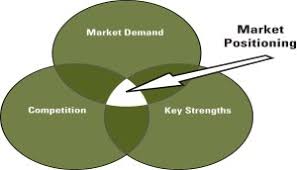By market share, we can divide the categories of companies into the following:
- Number 1 firm: it fights for total market domination (Use Defensive Marketing)
- Number 2 firm: it fights for increased market share (Use Offensive Marketing)
- Number 3 firm (rest of them): it fights for profitable survival (Use Flank and Guerrilla Marketing)

There’s a saying that it is easier to get to the top than to stay there. This time, I disagree. In marketing strategy once at the top, a company can use the power of its leadership position to stay there. This is really what the number 1 in any industry does.
Number 1 (Market Leaders): If you are number one in your industry, main role is to play the defense. In achieving this, your strategy and campaign should always be geared towards re-instating the fact that you’re the leader, especially to the minds of the public and the consumers in particular. MTN does this well when they state in their ads “another first from MTN” or when their campaigns starts off with “we were here when Hello became I do”. That’s restating the facts, classic defensive strategy. Also, use your size to your advantage. Use defensive and head to head coercive force. By common sense we see that a larger company has the resources to outnumber smaller competitors. It can advertise more, perform more R&D, open more sales outlets, etc.
It’s important to state that at the point of total market dominance , main competitor of the market leader that holds the majority of market share is not one of the other firms in the industry, but rather, the government. If the market leader attempts to grow larger, then anti-trust issues and other legal fights ( like we’ve seen recently with Facebook) will be raised.
Usually, you own double market share of number two and three times that of the rest of the market. I’d like to say, to stay on top, in the absence of any strong competition, attack yourself. Yes, attack yourself. In the words of Vadim Kotelnikov, “Average ones compete with others. Great ones compete with themselves”. This may be your brand introducing products better than your existing ones to pre-empt similar moves by the competitor.
Number 2: In your industry, if you in this position, then try not to attack the number one competitor head to head, especially by pricing since economy of scale favors the number 1 due to size. If the competitor is way much larger than you, except if you are the biblical David going for Goliath, please don’t go head to head with brutal force, rather take advantage of its weakness, especially in terms of its position. Speed , superior strategy, better employees and products can be your advantage. Also your ad campaigns can be intentionally offensive, for you are the opposition and that’s effective.
As the number 2 in an industry, stay off hand to hand (combatant) strategies. You don’t grow here by hard work but smart work. Management should be about strategy and not hard efforts. When management declares that it is time to “redouble our efforts”, then the marketing battle has turned to hand-to-hand combat and is likely to end in defeat.
Number 3: Use flank and guerrilla marketing warfare with a niche positioning technique. Niche focused branding and market segmentation is the most effective bet. By the way, “Market Segmentation” simply means picking a sub-set of the entire marketplace that you can organize your sales efforts around. Don’t try to sell to everyone. Look at an uncontested market place, and apply Disruptive Innovation. Deliver products that interacts between two industries or save more time, cost or scope with a more intimate customer experience. Out of all the people in the world, who will you try to sell to? Most businesses are good at carving out their corner of the market. Then they do whatever they can to own that space.
An example of flanking and guerrilla warfare is the flanking strategies Absolut Vodka used through pricing in the vodka market. Purposely pricing themselves about 50 percent higher than leading competitor Smirnoff, they flanked them on the nearly established premium vodka market. A few years later, Grey Goose offered a vodka priced 60 percent higher than Absolut, in turn flanking them in the “ultra-premium” vodka market. This same pricing maneuver was used against GM by Benz in its American market. Benz purposely priced their luxury cars much higher than Cadillac as part of their campaign to represent Mercedes as a superior car (“engineered like no other car in the world”). It was a long-term strategy: after four decades, their yearly sales (about 73,000 cars) were still less than monthly sales for Chevrolet (one of GM’s core brands), so GM never made a move to decisively answer them. By 2004, Mercedes was outselling Cadillac; and Cadillac had long lost its reputation as being the prime example of a luxury car.
We also see flanking by Sony in the portable electronics (Walkman and Discman’s in the 90s) and Volkswagen with automobiles successfully won the position of small size. As a flank strategy, you can also try to be the first to do something in your industry – for example, Close-Up was the first gel toothpaste and Softsoap was the first liquid soap. Or you can attempt to cross sell with another industry, for example Swatch distributed its watches in supermarkets, Timex distributed its watches in drugstores and Hanes distributed L’eggs pantyhose in supermarkets using innovative packaging and displays.

In summary, flanking maneuver can help you as an underdog achieve advantageous position over competition; Flanking is useful because a higher force’s offensive power is concentrated in its front, go through the neglected sides and blind spots and a SWOT analysis on the competition can help you achieve that.
Eizu, ©Hexavia!
Strategy. Business StartUps and Corporate Restructuring. Projects. Training. Consulting





